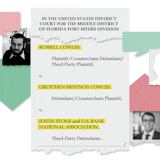An "emblem of motion and power — pulse of the continent." That's how Walt Whitman described a train speeding through a snowstorm in "To a Locomotive in Winter," a poem that thrills to the vehicle's "fierce-throated beauty" and clamorous power.
Whitman wrote the poem after rushing from New York City to Washington, D.C., during the Civil War, relying on the fastest conveyance possible in his day. He'd just learned that his brother George had been wounded at the Battle of Fredericksburg.
I traversed the same territory in reverse, riding from the capital to New York City aboard Amtrak's Acela on a recent wintry afternoon, and I quickly understood Whitman's reaction. My ride, too, combined beauty and exhilaration.
And speed. The Acela Express is the nation's fastest train, maxing out at 150 miles per hour and covering the trip's 226 miles in two hours, 45 minutes.
To do that by car, you'd need to average 82 miles per hour. Good luck with that.
The East Coast's time-distance-cost-hassle travel equation is different from the Midwest, where bullet trains, including one between Chicago and the Twin Cities, remain a distant dream. In the busy northeast corridor, Amtrak has established itself as a major player for people frazzled by airport security lines, but still in a hurry.
In the 13 years since high-speed Acela trains began operating between Washington, D.C., and Boston, they have captured a hefty share of business and pleasure travel. Capacity and ridership have risen, and the trains are often fully booked.
Perks of riding the rails
It's not that train travel is always cheaper. In fact, coach airfares often run less than a business-class round trip on the Acela. (Coach seats on Amtrak's Northeast Regional run are cheaper, but that train's D.C.-New York trip has more stops and takes 3 hours and 25 minutes.)


